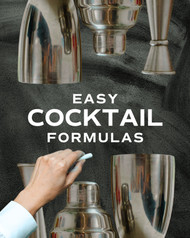5 Simple Cocktail Formulas to remember for better home-cocktails
Posted by Lauren Burfield on 19 Feb 2024
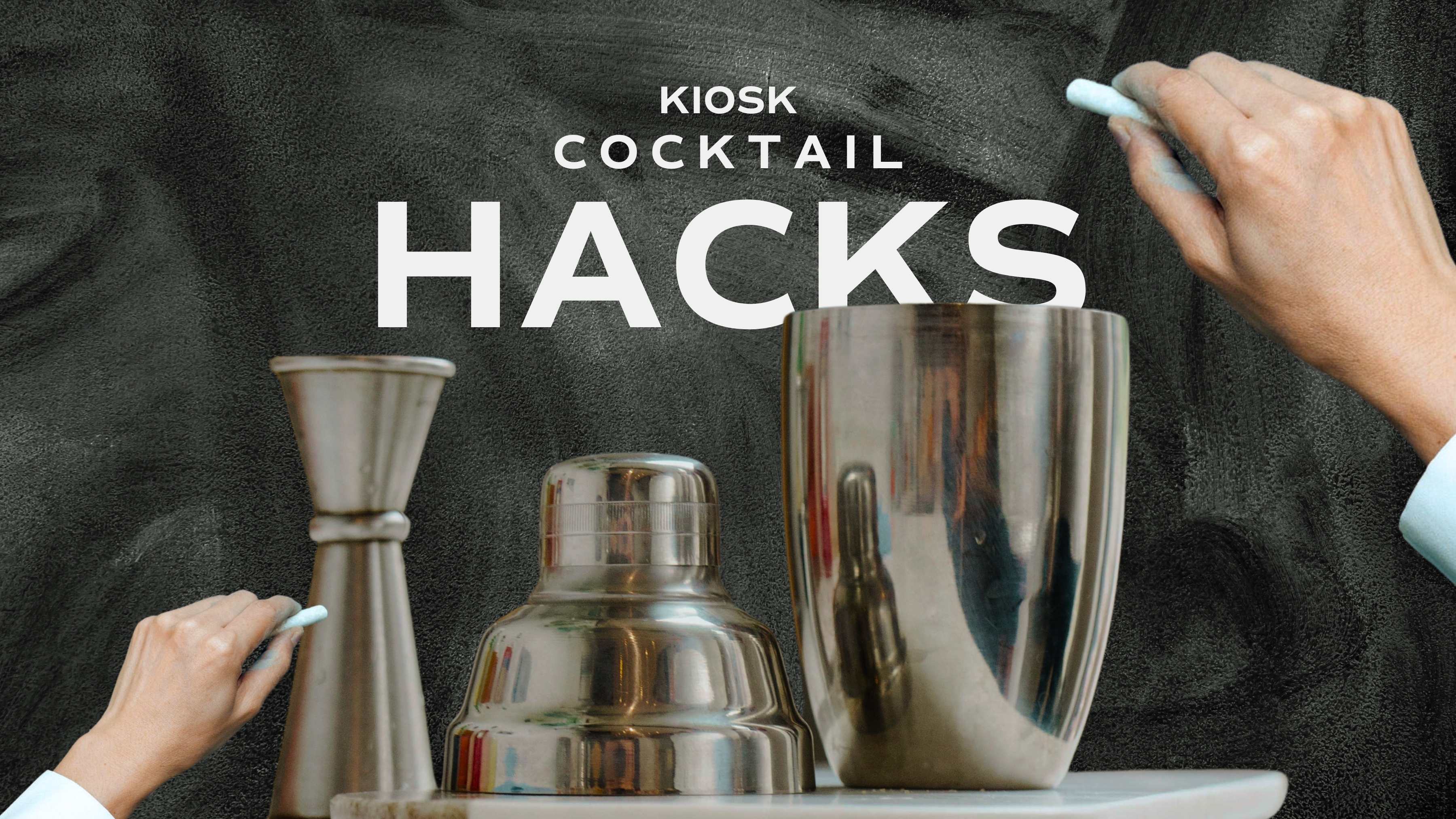
We’re taking you back-to-school and looking at the cocktail hacks that will step up your home-bartending game.
When you first venture into the world of home-cocktail making, it’s only natural to feel like you don’t know what you’re doing. I know I did – What style of cocktail do I make? What recipe should I Google? What are the best cocktail books to read? Where do I start!
Let’s begin by fast-tracking your skills with a simple and easy hack to remember: most cocktails follow a pattern that will fall into a generalised ‘cocktail family’. Memorise these initial families and you’ll find yourself becoming more proficient, confident and creative there on out.
Once you understand the basic cocktail groups, deciphering the countless riffs, twists and variations on the classics will be a piece of cake. Yes, confident cocktail making relies on these base principles, but it also calls for balance and personal preference.
Cocktail Formula 1: The Sour
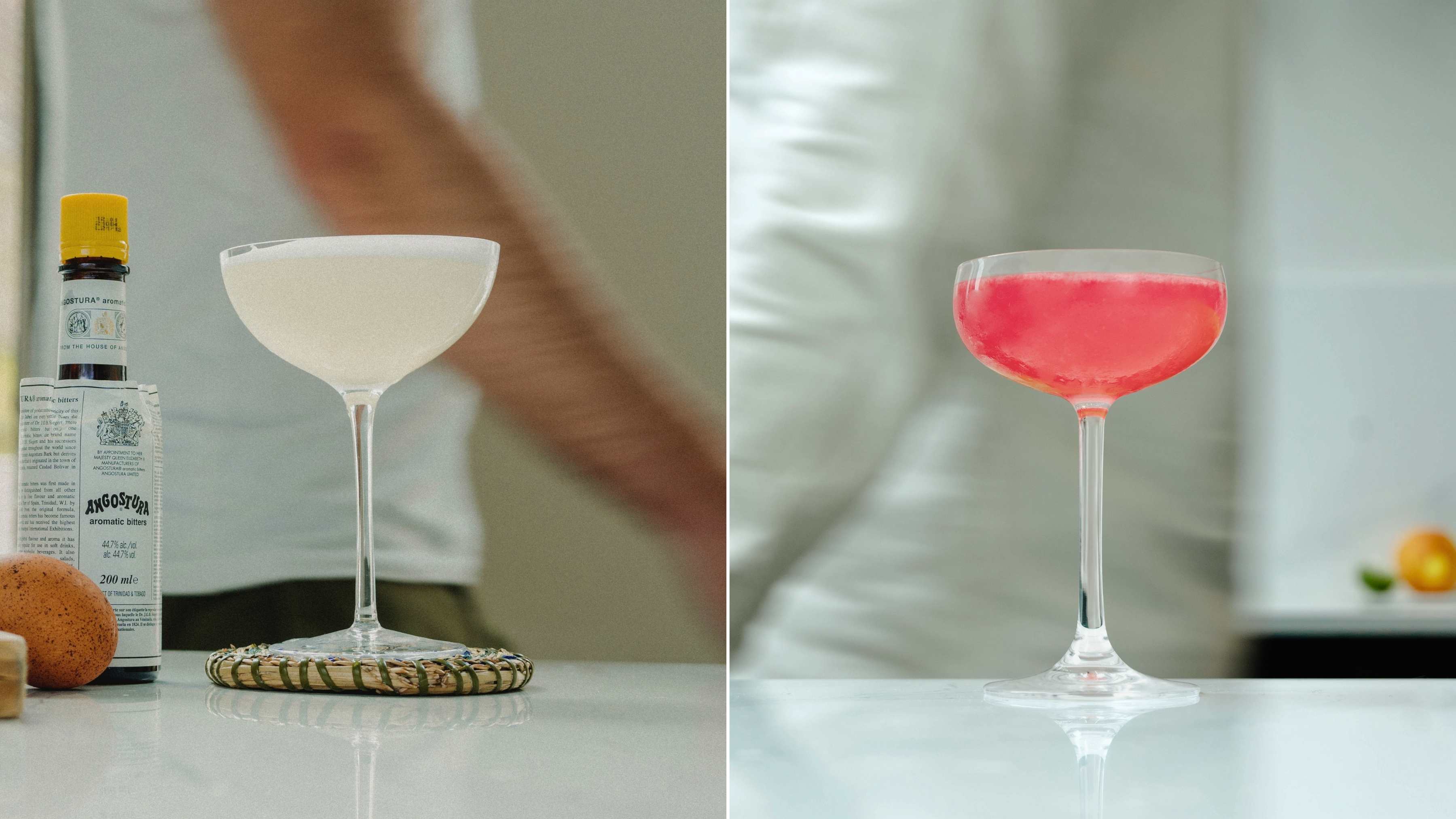
The Sour is considered to be a must-know staple in the world of cocktail families. It’s so simple and therein lies its beauty and why there are so many versions. The serve follows a very straightforward formula:
Spirit + Citrus + Sugar (+ opt Egg White)
Traditionally The Sour was created with Bourbon for a Whiskey Sour. But look at this – swap Bourbon for Amaretto and you have yourself a Disaronno Sour. Bring in Pisco for a Pisco Sour, or Rum for a Santa Cruz Sour, the list goes on… So many riffs aren’t really riffs at all, it’s the same basic formula with different ingredient combinations. Remember it this way: Simplify and Substitute.
The addition of egg white in a Sour is completely optional, and its inclusion is normally what confuses new home cocktail makers in understanding what a Sour actually is. Many bartenders opt to include it, as it can give the cocktail a much-needed flavour balance, or as a way of improving the drinks final texture and aesthetic. For us, a Sour always has egg white (or a vegan alternative like aquafaba!)
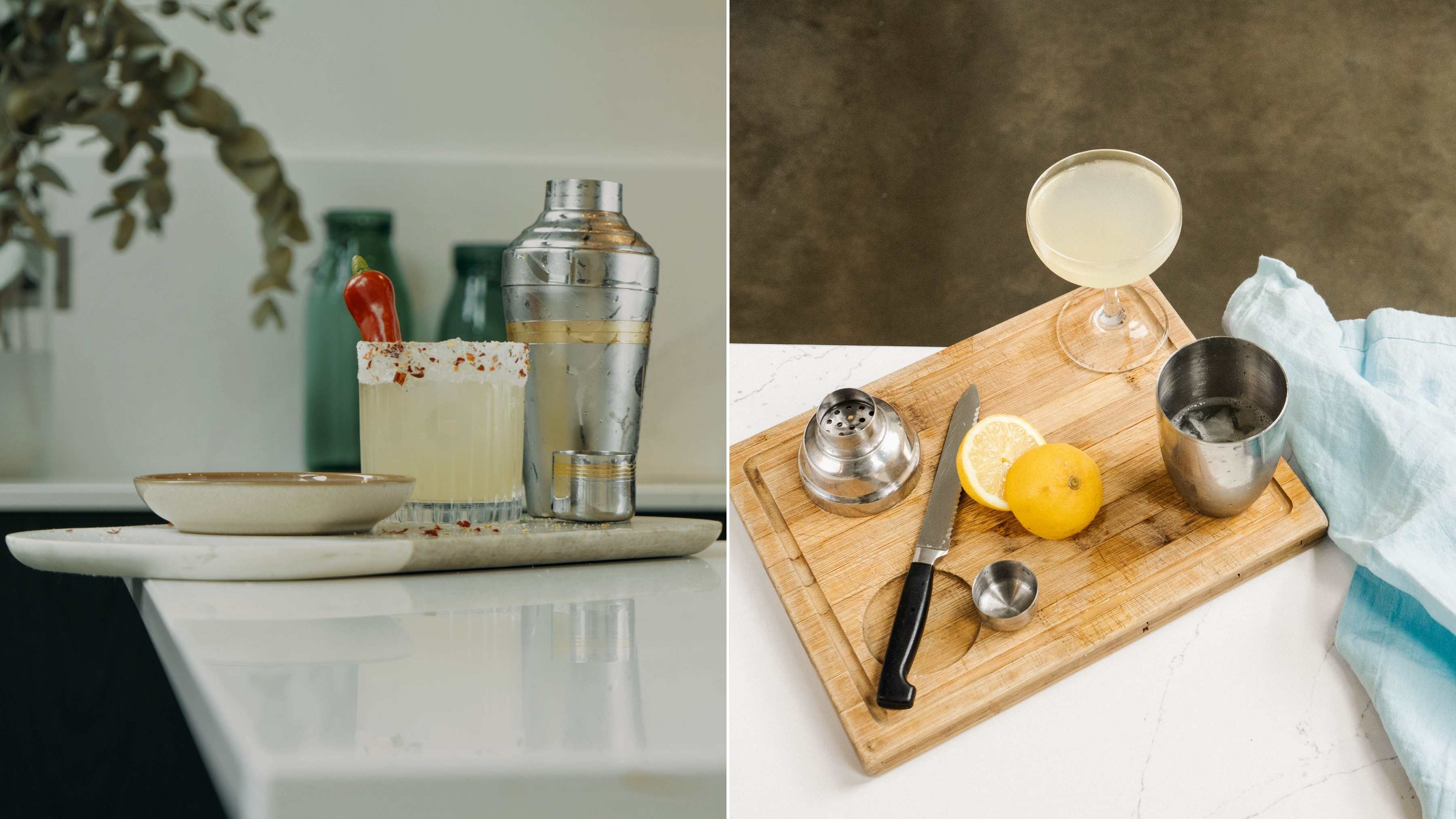
That said, some recipes drop it out all together and when it’s removed you may notice that many of your favourite cocktails fall under the very simple formula of: Spirit + Citrus + Sugar (Syrup). Margaritas, Cosmopolitans, Lemon Drops, Side Cars, and even a White Lady, all follow the same basic rules when they’re broken down.
Top Tips when making Sours:
Now that you’ve looked at the Sour family tree, here are some ways to ensure you make a good Sour, irrespective of the variations.
The Shake - Egg whites (or vegan foaming bitters) need agitation and aeration through a hard, vigorous shake in order to see that perfectly silky foam settle on top of the liquid. Some bartenders ‘dry shake’ first (a quick shake without ice) to really bind the ingredients before adding large cubes and shaking again. The dry-shake method means that you can aerate the whites without fear of over-dilution, although if you’re not confident with a Boston Shaker, it is a bit of a faff in the beginning as it requires opening closing the tin a few times.
To compromise, shake your tin in a circular motion, rather than straight up and down, which causes a whip-like effect and maximises that space inside the tin.
Glassware & Barware – head to our ‘Upgrade your Barware’ article to find out more about how your cocktail kit can make a difference to your serve.
Cocktail Formula 2: The Mule
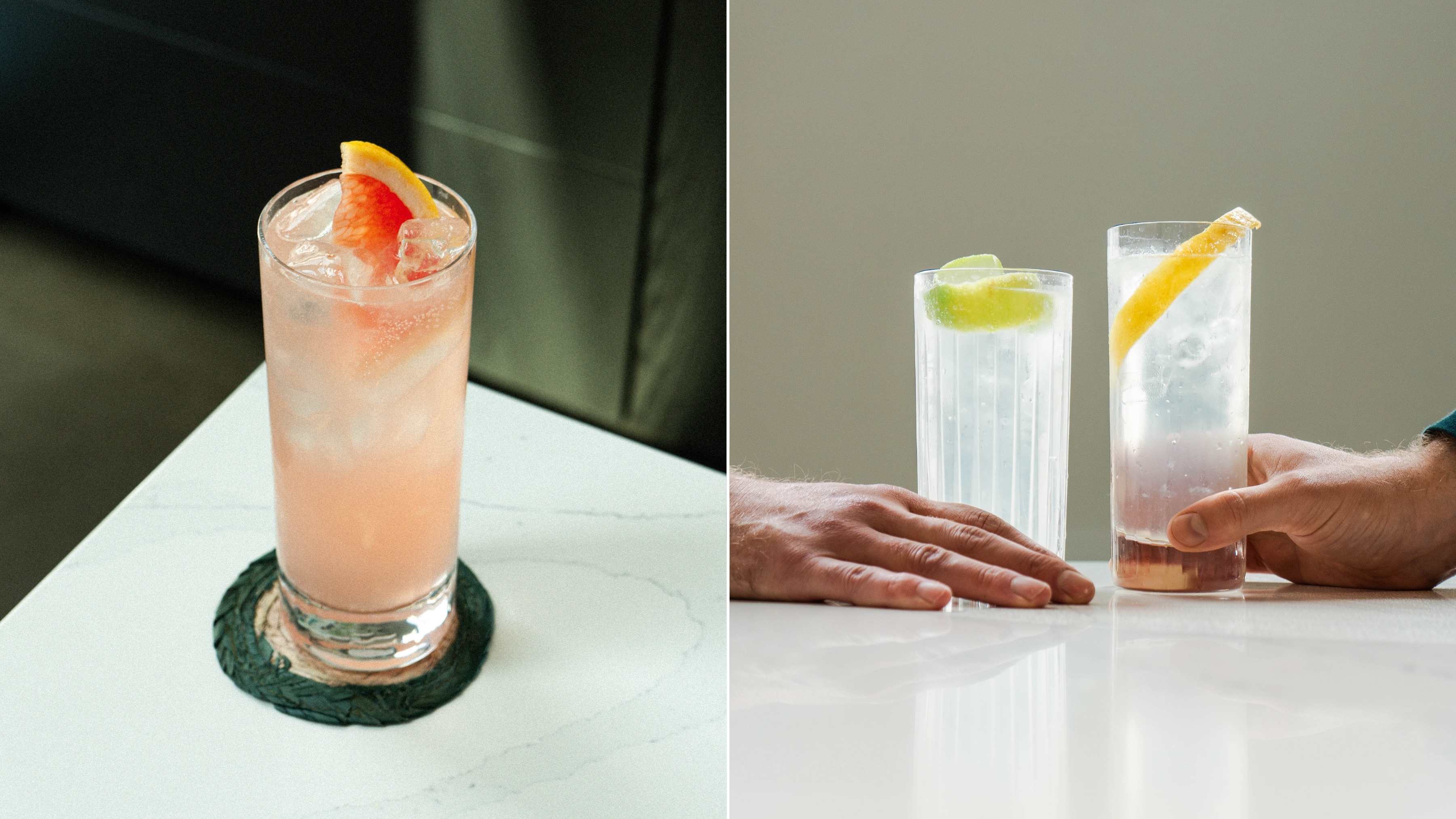
Mules are a family of cocktail that follow a very simple pattern:
Spirit + Ginger Beer + Citrus Juice
Typically, you’ll hear about Mules being made with ginger beer or ginger ale. For example, a traditional Moscow Mule is made with Vodka + Ginger Beer + Lime Juice. Get this formula down and you’ll notice that Kentucky Mules, Mexican Mules, Mamie Taylor, Caribbeans Mules, Dark & Stormys and so many others follow the same formula and have the same intent.
If you break the formula down even further, you’ll be met with:
Spirit + Carbonated Mixer + Citrus Juice
Suddenly, this simplification opens the gate to cocktails like: The Paloma, The Gin Rickey and The Collins. The Mule family is all about simplicity and accessibility. It’s a lighter and more refreshing serve that isn’t meant to be overpowering or spirit-forward.
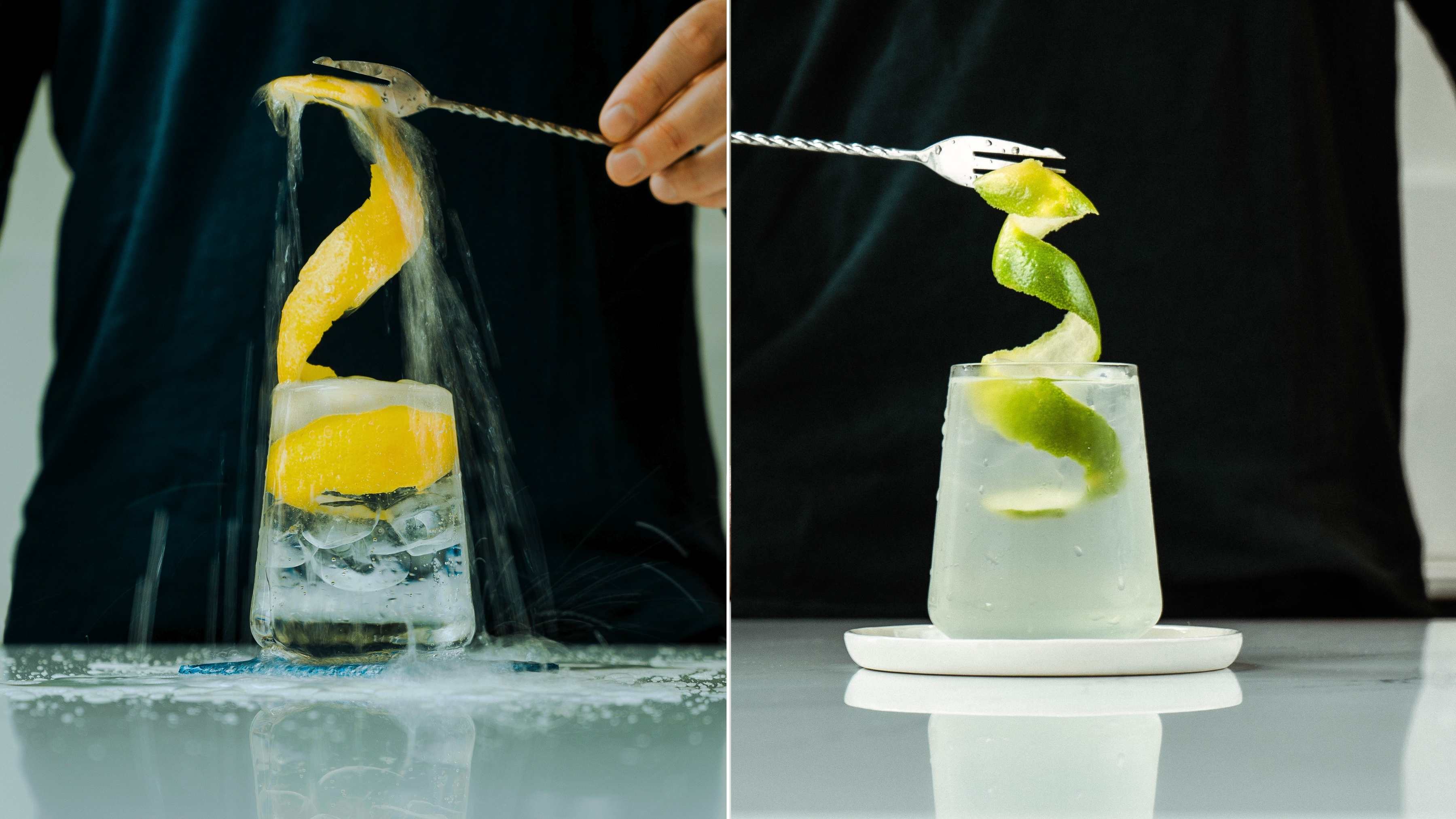
Top Tips when making a Mule:
While there are riffs that change the component parts, the drink is typically built in a Collins or Highball glass, so naturally you won’t need to deploy a variety of alternative techniques for different effects.
Our advice? Focus on the garnish – consider the purpose, the aroma and how it interacts with the drink. A slice of grapefruit for a Paloma will draw attention to the power of bittersweet citrus, where as a lime peel, as opposed to a slice, will focus on the citrus oils for a pithier flavour profile.
If you want to boost the fresher citrus notes in your Mule, muddle your chosen citrus wedges in your glass, instead of shop bought lime or lemon juice. Alternatively, to enhance that citrus zing, change the method – add the citrus wedges, juice and spirit into a shaker instead…and shake before straining into the glass, then top with your carbonated mixer of choice!
Don’t be shy. When you think you’ve perfected the ratios of a simple mule, get creative with some riffs and twists of your own! Throw in everything from jalapeños to hibiscus, watermelon to peach and strawberry. The point of a Mule is accessibility, so as long as you don’t overcomplicate it too much, build away!
Cocktail Formula 3: The Old Fashioned
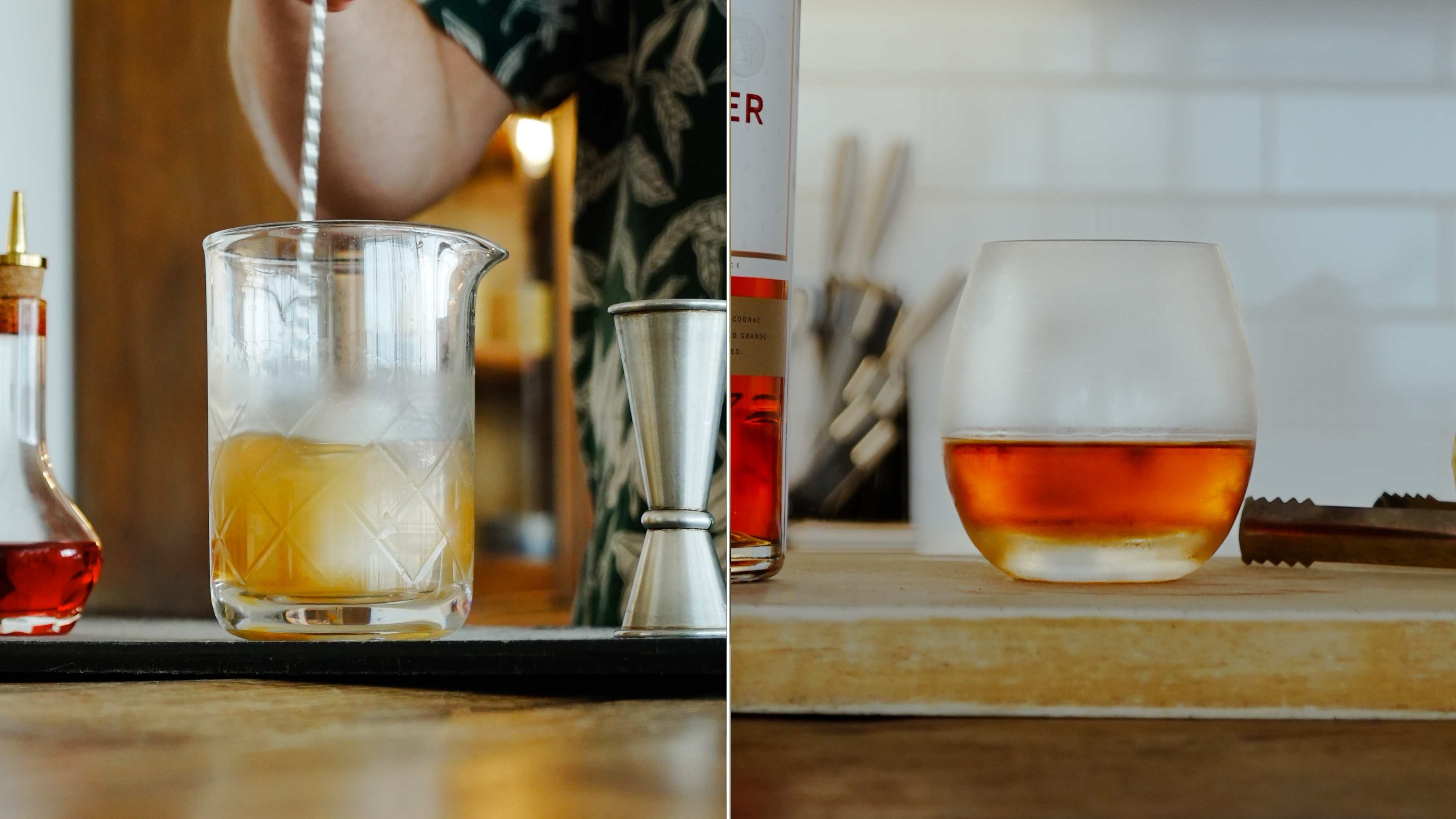
If you were to walk up to a bar and order an Old Fashioned, it’s safe to assume you’ll receive a cocktail made with some form of Whisky. However we see it more and more now, that the Old Fashioned Family is branching out into countless variations, spanning across many different spirits. The starting formula you should know though is:
Lead Spirit + Sugar + Bitters
The base principle of an Old Fashioned is to draw your attention to the ‘hero’ ingredient – the spirit. New-fashioned twists have been around for a long time, but for the majority, they’ve remained in the realm of whisky bases. Even then it’s not limited to American Whiskey. Bourbon and Rye have been substituted for Scotch, Japanese, Irish and New World Whisky, alongside a variety of different bitters or sugar infusions.
You can count on the fact however, that in more cases than none, the spotlight on the lead spirit is a universal trait for any Old Fashioned.
Google it – you’ll see contemporary cocktail recipes shifting attention towards other spirits as the hero. Swap Whisky for a Rum Old Fashioned, garnished with dehydrated banana chips instead of an orange peel. A Gin Old Fashioned with a lemon twist or herbal garnish, or even a Mezcal Old Fashioned with agave syrup (in substitute for sugar syrup) and a grapefruit slice.
If you look closer, all the alternative serves above do the same thing - lead with the spirit, soften it with sugar and accent the cocktail with a complimentary pairing of bitters and garnish.
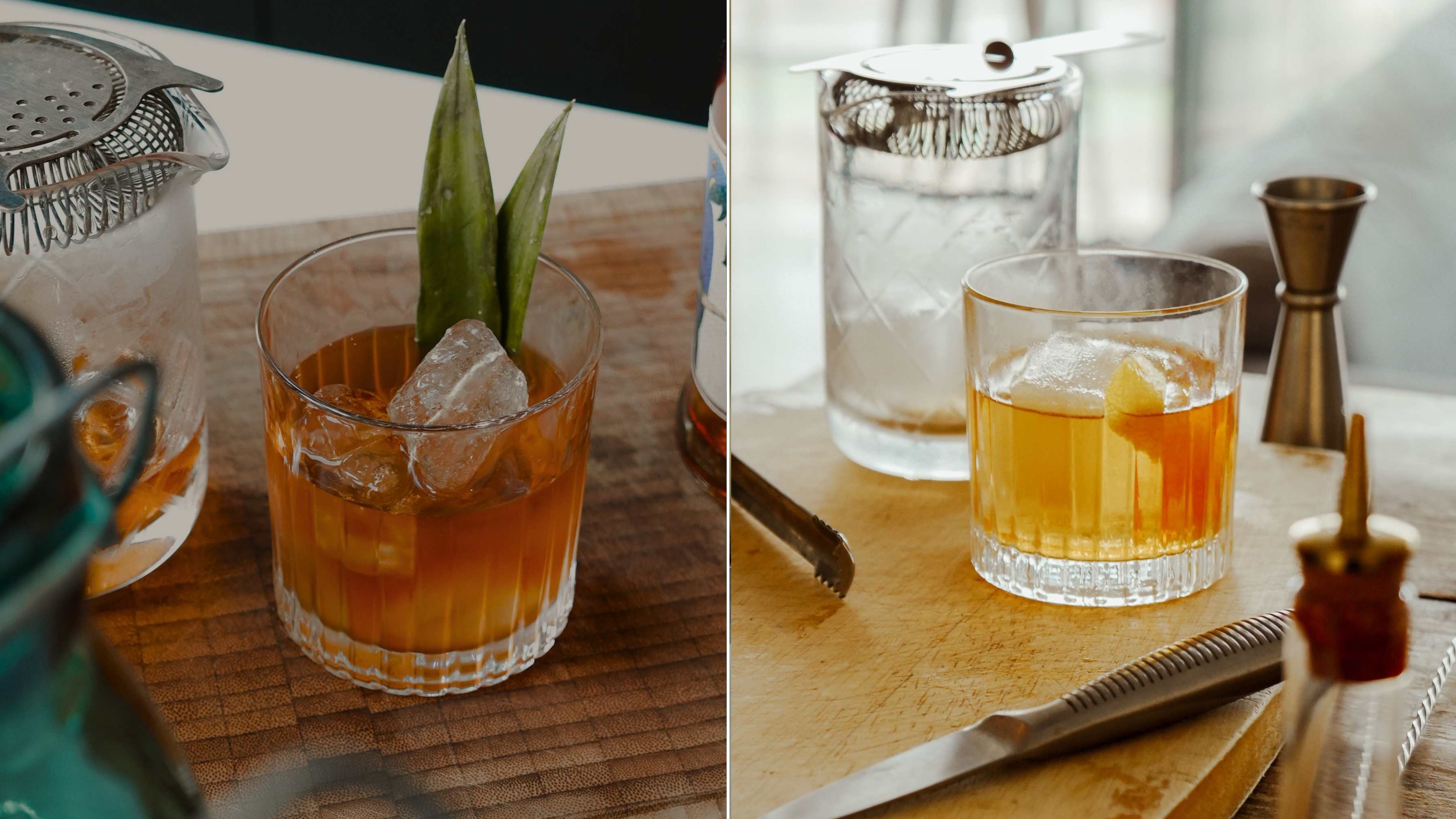
Top Tips when making any Old Fashioned:
Dilution – Focus on the dilution and temperature in your cocktail beaker. You can read all about how to control your rate of dilution for cocktails like Old Fashions in our Tips & Tricks article.
As the genre (or family tree as we've phrased it here) is about the lead spirit, pay particular attention to its characteristics. The ABV, the flavours, and the intensity, as they will help guide you. For example, a higher ABV means you can stir away, while something that has a lower starting point means you need to be much more careful.
Sugar – hone in on home-made syrups. Similarly to The Sour, opt for a 2 : 1 ratio of sugar : water. Store bought syrups aren’t that bad, but they are eclipsed. A good home-made version, opens the door to customised infusions with real ingredients to take your Old Fashioned to new levels.
Cocktail Formula 4: The Smash
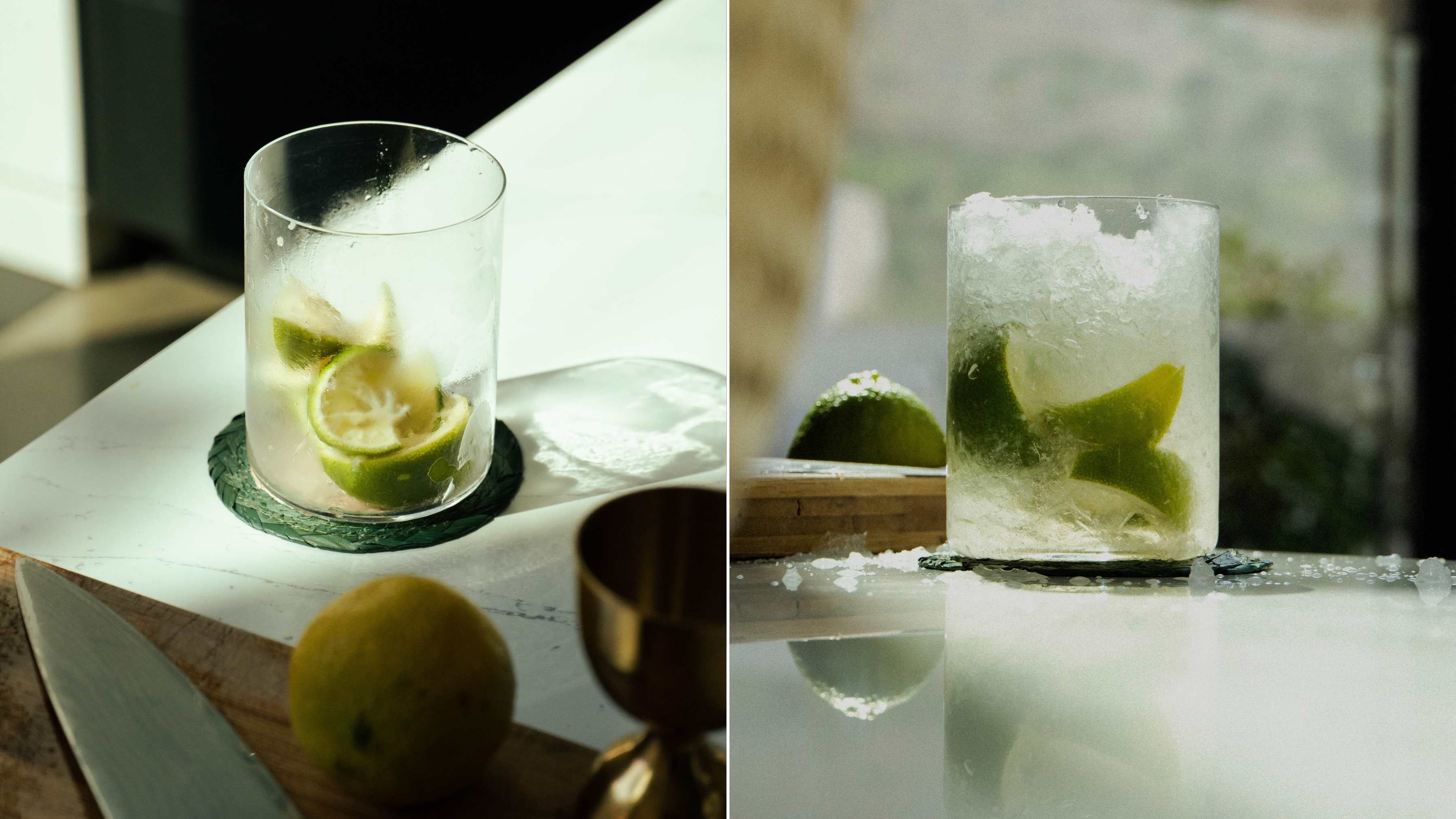
As a cocktail family the Smash is very similar to a Sour. The two key differences to look for when identifying the genre is – a Smash will have no egg whites and the recipe will call for muddling…
For those interested in this style of cocktails, let’s break it down to a simple formula that’s easy to remember:
Spirit + Muddled Ingredient + Citrus Juice + Sugar
One of the more famous “smash” recipes is the Gin Basil Smash, made by muddling basil leaves, lemon juice and sugar together before vigorously shaking with Gin and double straining the serve over fresh cubed ice. There are now riffs that feature other herbs, fruits and spirits but they all follow the same construction methodology. When you think about it though, cocktails like The Caipirinha and The Mojito can also fall into the ‘Smash’ category.
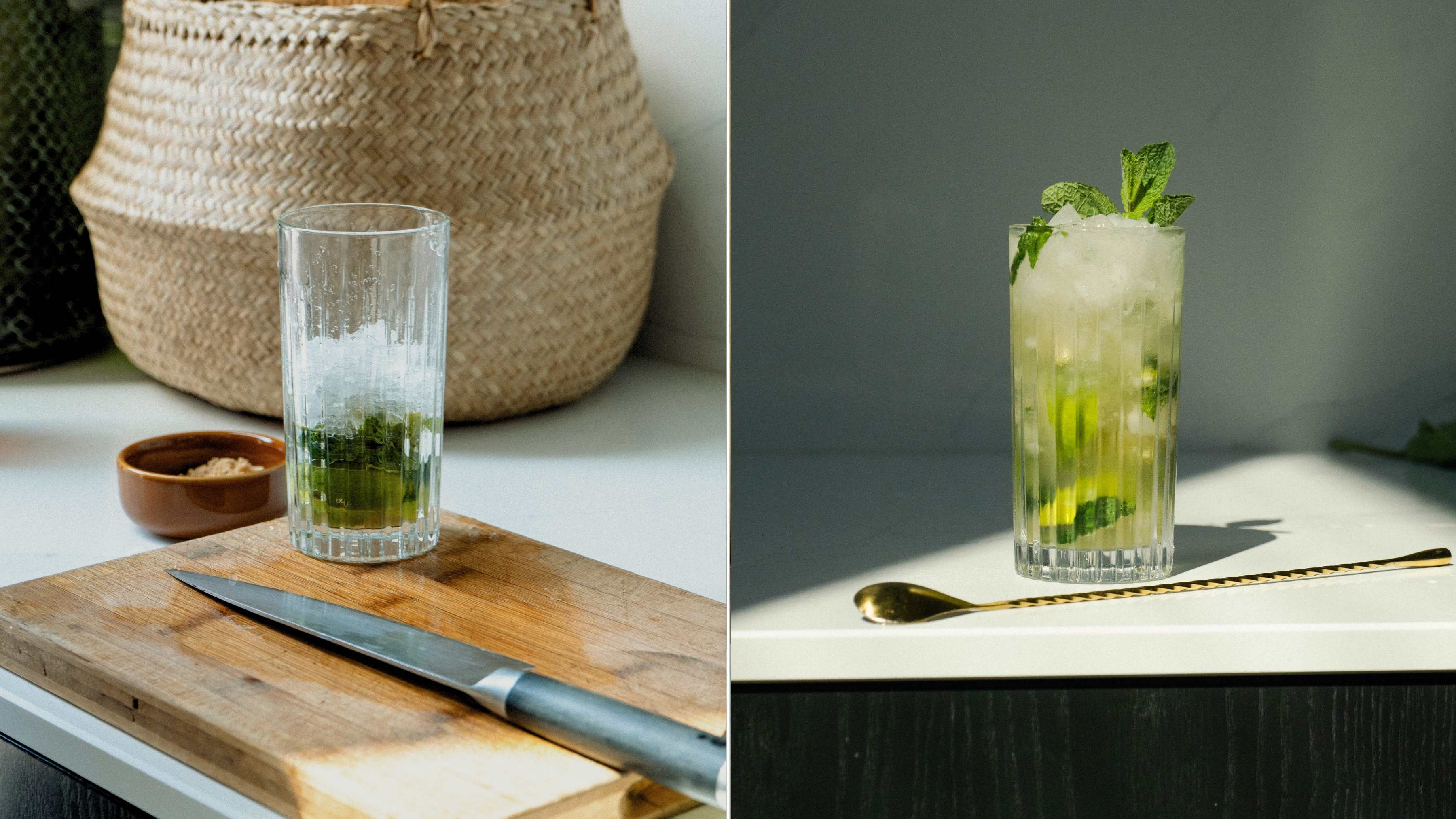
Top Tips for Smashing Cocktails:
A good Smash comes down to balance and the best way to achieve that is to think about what you’re muddling. Before muddling any fruit, do a quick taste-test to get a feel for the tartness / sweetness and adapt from there. Bear in mind however, that if you’re muddling citrus wedges, you’re not only pressing the juice, but expressing the oils from the zest too.
Figure out if you want to muddle your fruit with the sugar or keep this step separate. Some Smash recipes call for honey, maple syrup, agave or home-made infused syrups like rhubarb or lavender – which will require muddling fruit separately before the addition of the sweet component. Other recipes will simply call for brown demerara sugar or white caster sugar, which can be muddled with the fruit.
Cocktail Formula 5: The Punch
The Punch, or more specifically the Rum Punch, is a very special and historical genre of cocktail all in its own right and that’s because there is no standard recipe to go by.
Anywhere you order a Rum Punch, whether you’re savouring a funky variation at a swim-up bar in Jamaica or perched on a stool in a dimly lit Tiki joint in London, the cocktail served to you will always be different.
 Yes, there have been countless recipes, riffs and recreations on the Punch, but many follow the same basic formula…broadly speaking. It’s thought that the word ‘punch’ comes from the Indian word ‘panch’, which means five (and that's the first thing you tend to see - five ingredients). Second is the ratio, which can be traced back to the famous Bajan poem for how to make a rum punch (and one we swear by):
Yes, there have been countless recipes, riffs and recreations on the Punch, but many follow the same basic formula…broadly speaking. It’s thought that the word ‘punch’ comes from the Indian word ‘panch’, which means five (and that's the first thing you tend to see - five ingredients). Second is the ratio, which can be traced back to the famous Bajan poem for how to make a rum punch (and one we swear by):
‘One of sour, two of sweet, three of strong and four of weak,
A dash of bitters and a sprinkle of spice,
Serve well chilled with plenty of ice.’
If you consider The Punch as a cocktail family, this one tends to be a bit more complicated than just looking for a drink with five ingredients and a set ratio. Many bartenders however use the poem as a starting point and a great ‘hack’ to help you understand the ingredients you’re working with and your preferred ratios, irrespective of whether the recipe has the word ‘punch’ in the title.
Top Tips for making a Punch:
When making a punch – ice is key. Don’t skimp. In contrast to what you might think, the more ice the better as it helps you control the rate of dilution if you choose to serve your Punch cocktail out of a pitcher or punch bowl.
Think about what will infuse the fastest over time and what will just go soggy. For example mint is aromatic, but has its biggest effect as a fresh garnish in a glass. Orange chunks and fresh chili however won’t do much at first, but will add a second layer over time and become more prominent. Most punch recipes call for garnishes and fruits but it’s key to understand that they are not just garnishes - they play a big role in differentiating between a good Punch and a great Punch.
Tip – separate the two into what’s added to the batch to help the flavours ‘evolve’ over time vs what is added to the glass on an individual bases (like the mint).
As soon as you start reading cocktails as part of a family tree, you’ll see that hundreds of recipes can be understood as merely a few dozen genres.
It becomes more manageable to wrap your head around home-cocktail making, meaning that you will be able to apply a better baseline of understanding to the genre of drink you want to make, while simultaneously maximising your chances of creating something great.
Eventually you’ll intuitively know how to read a recipe and adapt it to your tastes. You may even become comfortable at experimenting with a few ideas of your own!
Happy Mixing!


